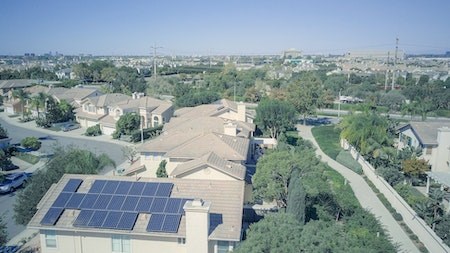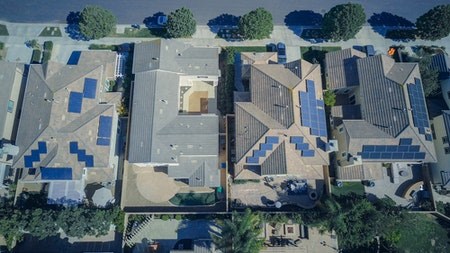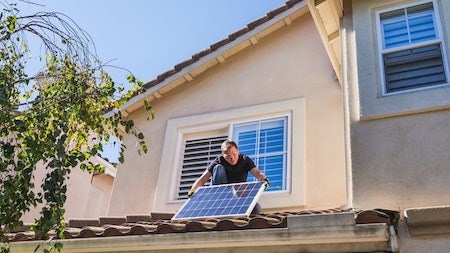Arranging solar panels in a cube shape on a tower enables more efficient sunlight harnessing, according to Alternative Energy Sources.
WATCH : Choosing the right solar solution for your home and how to go off-grid.
Researchers at Massachusetts Institute of Technology (MIT) have found that the solar output of 3D solar panel towers is up to 20 times that of regular flat roof-mounted 2D solar panels, with findings reported in the Energy & Environmental Science journal.
Traditional solar panels mounted flat on rooftops only capture sunlight when the sun is directly overhead. As it travels across the sky, the sun’s rays directed at the panels change angle, lessening the amount of solar power harnessed.
To get around this inefficiency, the MIT researchers arranged a collection of panels in a cube shape on a tower. By extending the time during which the sun shines directly on the panels, efficiency more than doubled. The researchers found that, with optimal arrangement of the solar panels, the 3D shape has a power output of up to 20 times more than regular solar panels on rooftops.
Process
A 3D solar panel tower is essentially a series of standard solar panels stacked on top of each other to be more efficient at absorbing the sun’s solar energy.
These photovoltaic cells are designed to absorb more sunlight efficiently and are optimally positioned to absorb sunlight even when the sun is on the horizon.
The stacked panel design maximises the number of photons the 3D solar panel tower can absorb, providing more electricity generation than the standard rooftop solar panel installation.
As they are stacked vertically, they are more space efficient and don’t require acres of vacant land or roof space.
Domestic use
By installing a 3D solar tower, you can supplement – or even replace - your mains power supply and save money on your electricity bill.
Alternative Energy Sources compared the efficiencies of 3D and 2D solar panels for a three-bedroom home with an annual electricity consumption of 6 000 kWh.
3D solar tower requirements are:
- 6 bifacial panels
- 2.5 m2 of space
Requirements for the roof-mounted solar system are:
- 22 solar panels of 250W each
- 36 m2 of space
This comparison clearly shows that the 3D solar panel system generates five times the amount of power of the roof-mounted system with far fewer solar panels. It also takes up significantly less space, making it ideal for domestic use.
The crucial design factor with the 3D system is getting the panel angles just right to ensure maximum power output. Although there are online plans for building and installing a DIY 3D tower, this is one job that is probably best left to professionals.
Writer : Sarah-Jane Meyer




